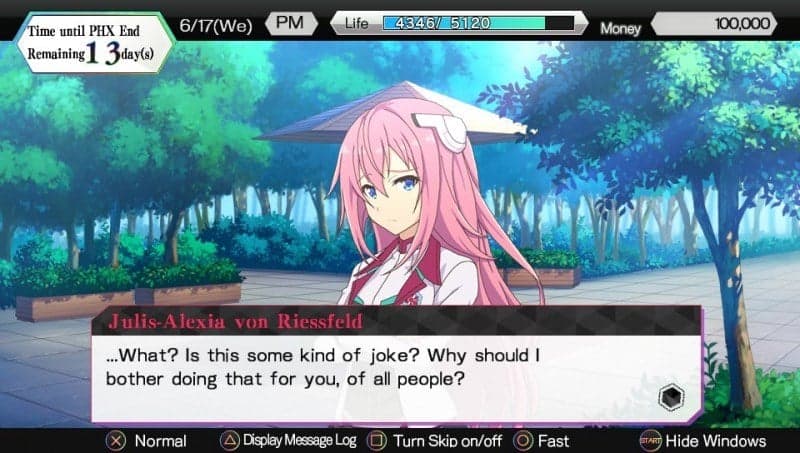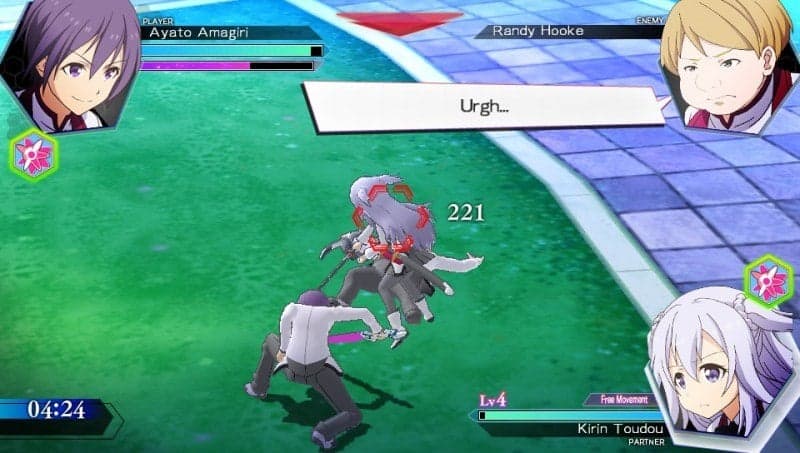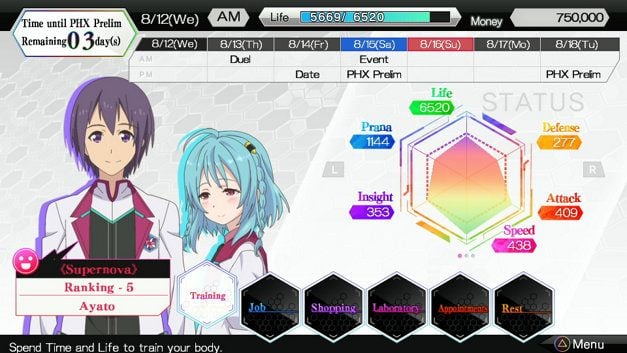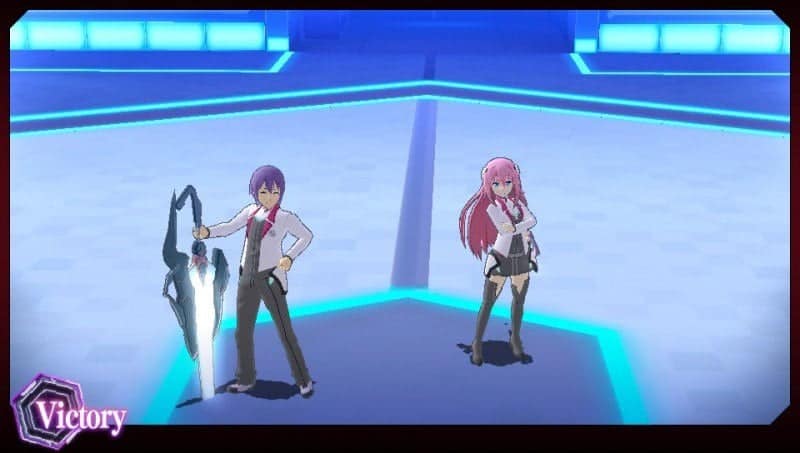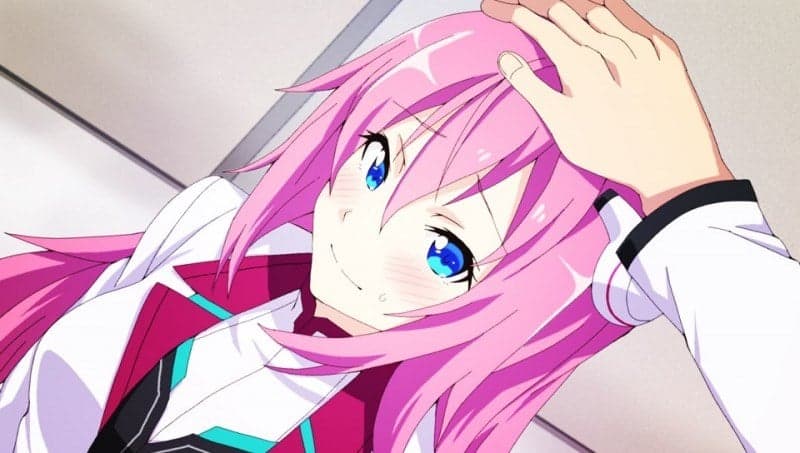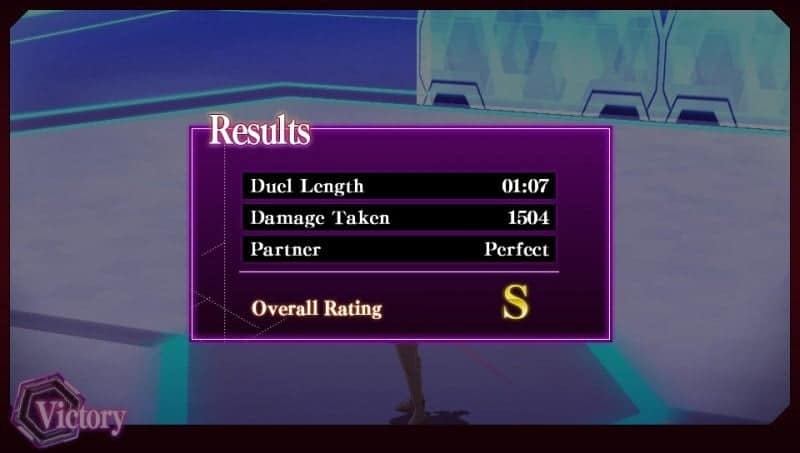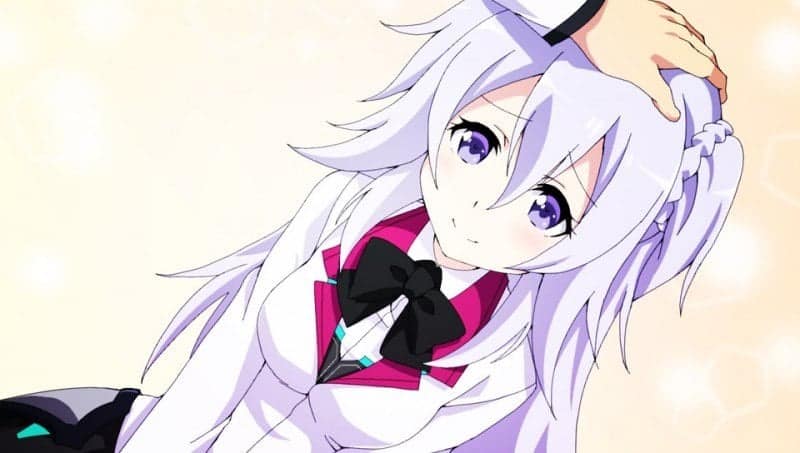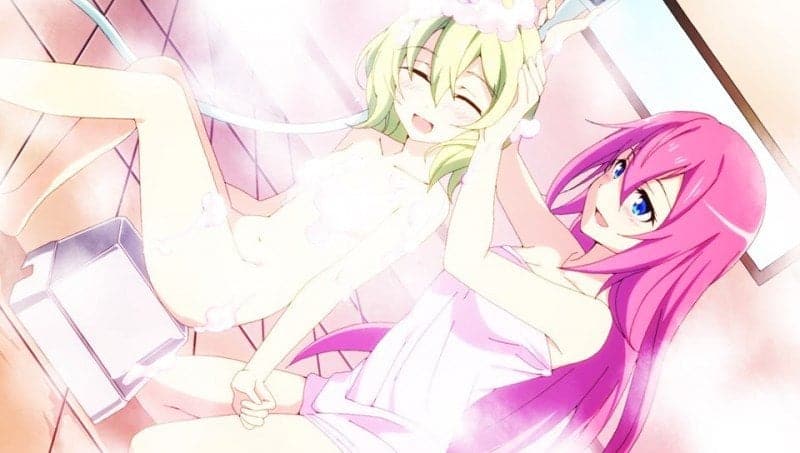Visual Novels, RPGs, and Action. All three separated can provide endless entertainment. However, what would happen if you put all 3 together? A.W. Phoenix Festa for the PlayStation Vita aims to do all three. Does it work well or should all three not mix? Let’s take a look. This is part of an ongoing series on import picks I previously started.
A.W.: Phoenix Festa
Developer: Bandai Namco Games
Publisher: Bandai Namco Games
Platform: PlayStation Vita
Release Dates: January 28, 2016 (JP); July 26, 2016 (NA)
Genre: Visual Novel, Action, RPG
Mode: Single-player
Disclaimer: The retail copy of this game was provided to us by Play-Asia.com’s Partnership program. Play-Asia is the number 1 site for importing R3 English Vita Retail games. To check our their selection, Click here. To purchase this game as part of the program, Click here. For any and everything Play-Asia, Visit their main page here or our store page here. Using any one of these links will contribute to us in the partnership program and we will be eternally grateful if you do. ^_^
Story:
The story is as follows:
In the 20th century, the Inertia destroyed many of Earth’s cities. A.W.: Phoenix Festa is set in Rikka, also known as Asterisk, a city with six academies. Students at these schools who possess Genestella, a sort of superpower, can compete in tournaments called Festas. Players follow Seidoukan Academy’s Ayato Amagiri or an original character they create. They’re able to train for the Phoenix Festa, make friends with NPCs, and perhaps even find love.
It is a very interesting story to say the very least. Depending on what you choose to start with, Either Ayato or your created character, the overall story can play out a bit differently. However, there are 6 different branches in this story. Each path is its own story and these stories do not connect plot wise. However, they may have some same minor events. The story is based on a partner of your choice, or the created character (4 partners to start, 1 gets unlocked after 4 are done). Gameplay wise is a different story.
My take on this is that each story is interesting enough to keep you engaged until the end. However, when repetitiveness sets in, you may find yourself struggling to keep going. Read on to find out more.
Gameplay:
Gameplay has three different components. I will cover each part briefly. The first part is the Visual Novel aspect.
In this Visual Novel component, you speak with your partner (or other characters in the game) on top of a background picture, very minimal animation to the characters (only at certain emotions), and fully voiced Japanese dialogue (from everyone but the main character). This is the pick your own adventure type aspect. You will get asked questions, you choose what you want to answer. Based on your answer, you can build affinity with your partner (only people who you can build affinity with), challenge people to duels, give gifts (partners only), and end the conversation. It is like most visual novels and plays out like one. I like this component.
Next component is the combat:
In combat, you are in a location and you battle the opponent at this location. There is a variation on location. The battle can be solo or with your partner against one or two opponents. It is a fairly simple process and very accessible. The player will pick up the combat very easily (and if you are stuck you are given a couple screens of a “how to” battle). You got heavy attacks, strong attacks, guard, move, dodge, dash, jump, and power attacks. Once again, it is easy to pick up and not really an issue here.
My take on this part is that the combat is easy in terms of story battles up until the last couple battles. There were no real difficult battles when I played. I think I went through all the stories and only lost 2 battles out of 50 something fights? It really is not that difficult and does not match the tone of the story being told when it is told: “This will be the most difficult battle”. In contrast, the jobs in the game have something entirely different. Your job battles start easy and gets difficult really quick. However, the rewards for the more difficult jobs is more money. So it does work out if you think you need money as you progress ( I just bought the most powerful weapon after I made it and gifts for my partner, and no longer needed money).
The third component is the HUD where your day decisions are made.
This is the main HUD. This is where you choose to make your choices for the day. There are six options. Training is where you level up your stats (each one caps at LV 3). The job is where you undertake jobs for money (each job caps at LV 10). Shopping you can purchase weapons, healing items, and gifts for your partners. Laboratory is where you modify your weapons. The appointment is where you set your schedule from a various of options (dating, dueling, etc.). Finally, Rest is where you… well… rest and recover for that time of day.
My take on this is that I like it. It is very organized and works well with things you can do. However, (no point against the game itself) these girls hardly ever wanna go out on dates until you build some sort of points with them. I kept getting rejected for a while 🙁 It reminds me too much of real life (don’t take this too seriously lol it is not a negative point against the game, just being silly)
Each day is split up in two times (AM and PM). Most of the events take place during a weekday during the evening (except small story parts). You will have to plan accordingly to make the most of your day for the game. Each story (with the except of the created character) is three months (June, July, and August). The created character takes place a few months before Ayato’s story starts. You will find yourself planning to do what is most effective in your day.
My take is that this is a very interesting element on a Visual Novel. It adds the importance of time management. It also adds the adverse element of a timer which makes you critically think and plan. I do this in my day to day life, and it is funny that this works better in the game than in real life for me.
Audio and Visual:
Visually, the game looks very anime-like. I am pretty sure this is intentional considering this game is based on an anime and manga series (I learned this after researching A.W. while playing the game ^_^). It stays true to the source material and I appreciate this a great deal. The only downside is the combat aspect, you can see the jags, but considering the hardware it makes sense.
https://www.youtube.com/watch?v=EMxc2Wvqb54
Audio-wise, the game is also true to the source material. The characters from the anime lend their voice to the game. The music team on the anime also lends to their talents to the game as well. overall it is a very engrossing experience.
Replayability:
Replayability is high in this game. You have 5 stories, different paths within the stories, unlockables, and a battle mode. There is no shortage of things to do in this game. The good thing about this is that each campaign is about 3-5 hours, so you can get through each path fairly quick. Also in addition to this, the RPG aspect takes full effect while playing with the custom character. It adds to the replayability. It works well with this type of game that is packed with content. Most of this is fun.. however.. it gets repetitive after a while. See the Fun Factor Section.
Fun Factor:
So… the overall question. Is this game fun? Yes most of the time, no sometimes. Let’s get the “No” out of the way first. The no is the repetitiveness. Each story has the exact same battles, however, done differently. You will find yourself just going through the battles quickly to get back to the story. Sometimes I even found myself just holding O to skip some of the lore because it just ran thin on me. However, you will still progress through. For me, it got like this through the 4th campaign. Another thing that I find that soured my experience is the campaign for each character makes you want more after they end. They end and the endings are kinda satisfying, but you want to see what happens next when suddenly the ending just comes out of nowhere. Remember the last day in every campaign is August 31st, so anticipate this. It didn’t take away from the fun, just left a bad aftertaste following a great story.
The good, though. The game overall is very fun and satisfying. It has been a while since I had fun with a visual novel (that is not a Lewd VN). It provides 5 different stories that are delivered well, easy/fun combat, and romance stories (except for the created character). If you can get past some of the repetitiveness, I promise you that you will get a good story that’s only in the game.
Overall:
A.W. Festa Phoenix is a fun experience that has up and downs in it. For a game that is part Visual Novel, part RPG, part action, and based off an anime/manga, it does an alright job in a game delivery. I would love to see more exploration and continuation in this franchise gamewise. It left me wanting more and that is not a bad thing. With 5 stories and some fun gameplay, you will tide yourself over for a while. I do recommend though you don’t try to rush it, you can burn out with some repetitiveness real quick if you are not careful.
Until the next entry in this series (which will be either must have vita accessories, Moe Chronicle review, or MS Gundam EX VS Force), Mgs2master2 out!
Reminder: This game was provided by Play-Asia.com. We are very thankful for this opportunity in the partnership program. To check our their selection, Click here. To purchase this game as part of the program, Click here. For any and everything Play-Asia, Visit their main page here or our store page here. We will be having a code soon to give you a 3 dollars off. The code is INFORMER
If you click any of these links and purchase anything, we get a kickback and will be eternally thankful. Thank you for reading.

